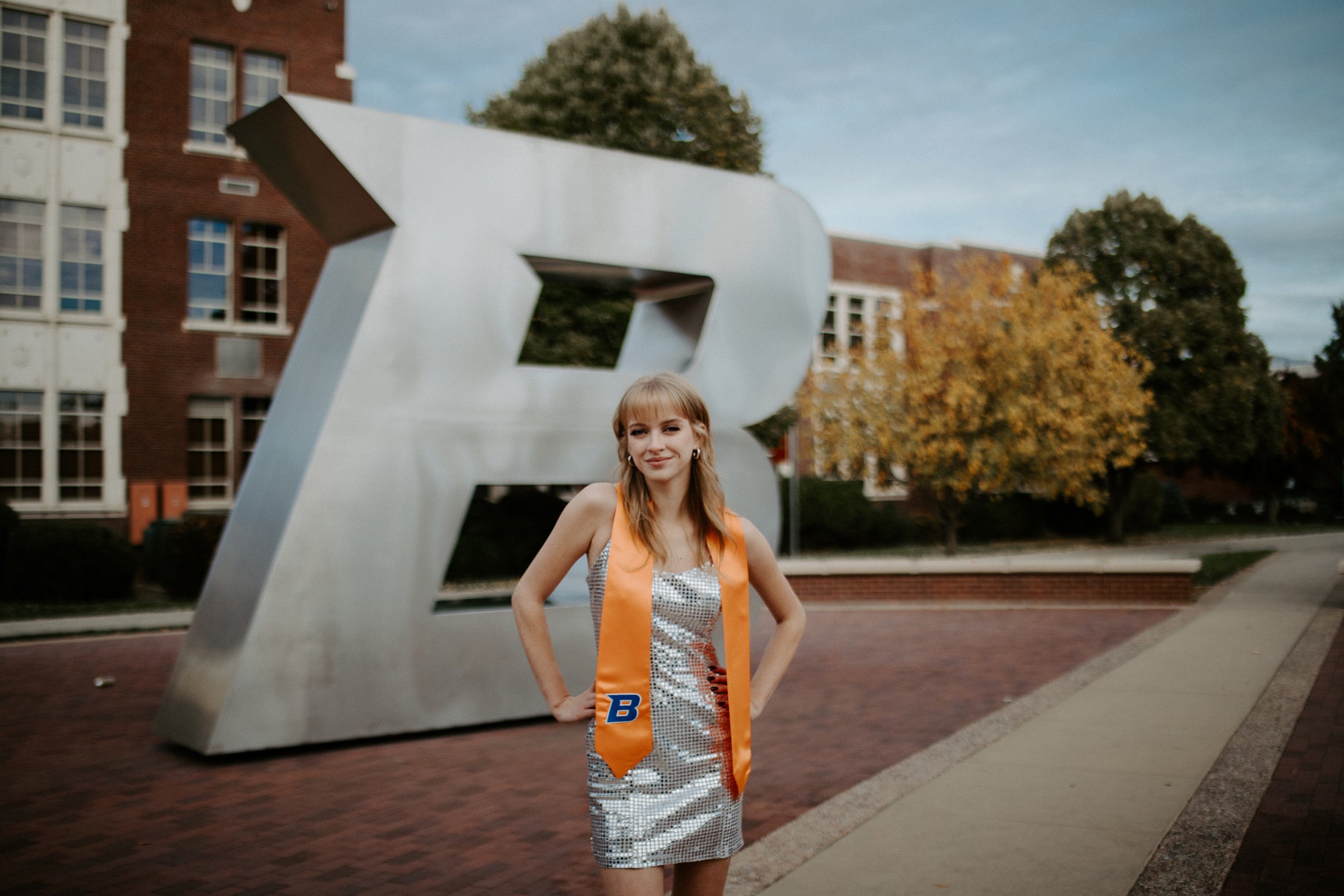
When Sarah Carson (BS, psychology, 2023) enrolled in the user experience design certificate, she didn’t expect the classes would lead her to an entirely new career.
Carson, originally from Nampa, Idaho, was working full time as a development specialist with the Boise State Foundation while completing her UX (or user experience) Design Certificate. The certificate is a shared program through the College of Innovation + Design and the School for the Digital Future. One course led Carson to an exciting project that would eventually continue outside of the classroom.
The project included a real-world client, Boise State Esports. Students were asked to collaborate with Esports Director of Operations Veronica Roper to evaluate and improve the program’s website.
“For me, it was the first time I worked with a client in this type of setting,” Carson said. “It was really interactive and immediately applicable to what I do in my job.”
Students reviewed the esports website and, guided by problem statements provided by the instructor and client, developed presentations to address business needs. They created an improved website design, focusing on navigation, accessibility and user engagement. For Carson, the project was more than an assignment — it opened the door to new skills and a deeper understanding of UX design.
“Before I started the certificate, I had never even heard of UX design. It was really transformative,” she said. “I completely understand it now, not only in an educational context but in professional settings too.”
Following the course, Carson continued working with Roper on donor engagement strategies for esports, including analyzing alumni data, building out potential donor pools and developing fundraising pages.
“Sarah works for the Boise State Foundation and gave amazing feedback on the fundraising page,” Roper said. “She pulled analytics for us, and now we’re working on an alumni newsletter to invite alumni to events and keep them updated.”
The collaboration also helped surface unexpected improvements for the esports website. One example: feedback from students revealed that some users felt intimidated visiting the off-campus esports arena. In response, Roper and her team are now creating a video that shows how to walk or take a shuttle from campus to the center.
“It was so beneficial because I got a ton of student viewpoints —nontraditional, female, male, even one esports player. It maximized the work I could get done,” Roper said. “The UX students had amazing insights. I loved seeing their creativity, and some of their ideas I was able to implement in real time.”
For Carson, the experience has been career-defining. She now plans to pursue a master’s degree in UX design and hopes to continue integrating psychology, analytics and user experience in her future work.
“I had no idea what I wanted to do before,” Carson said. “This course helped me find something I’m passionate about, and now I know what I’m working toward.”
The UX design course, led by instructor Greg Snow, emphasizes hands-on learning and real-world application. Students like Carson leave with a portfolio-ready project and the confidence that comes from engaging directly with clients.
“It’s rare to have the opportunity to apply the skills you learn in a classroom,” Carson said. “No matter what educational background you come from, you’ll be able to get something out of the UX Design Certificate.”
Roper said the project was a valuable experience for both esports and the UX design students.
“Students could see the direct impact of what they were learning, and for us, it was a chance to amplify student voices in a meaningful way,” she said. “Giving students space to own some of the process is really beneficial.”